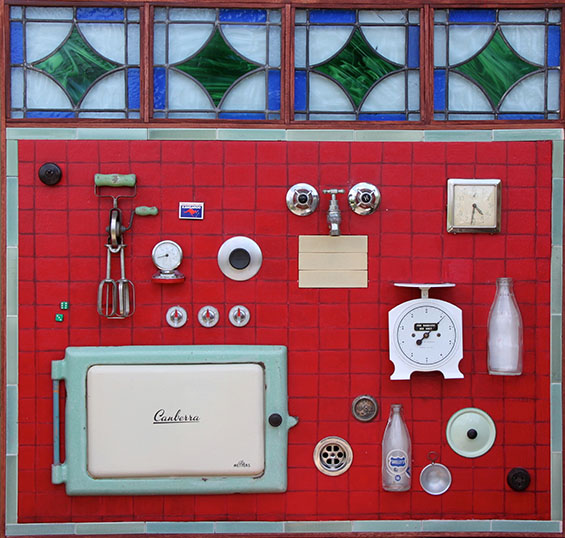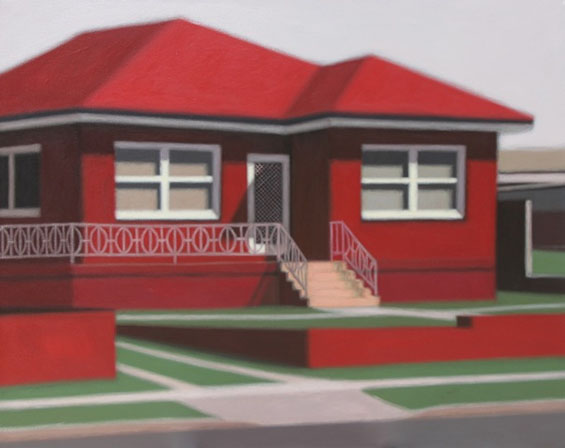
There are countless stories on the web about the innovative (and contentious) measures that librarians and other bibliophiles are taking to ensure libraries and book culture remain relevant (Michael Wilding’s SRB essay ‘Libraries under threat’ provides some examples). Fundamental to the modern library these days are built-in cafes, access to wifi, iPads, virtual librarians, lounging furniture, Xboxes and even a whole new code of manners that has sent the old-fashioned ‘shhh’ into decline. In recent years, there has also been a boom in initiatives aimed at improving access for people who may not otherwise get to a library. I am thinking here of projects such as the Footpath Library in Australia and the fantastic Logos Hope, a floating library that travels around the world promoting reading and undertaking charity work. Then there are the quirky stories about some of the more offbeat ways of bringing books to the people, such as the biblioburro donkey in Columbia, the Kenyan Camel Library (it is as it sounds), Little Free Libraries (often built out of letter boxes and telephone booths), and the Levinski Garden Library, which catalogues books not by author or Dewey Decimal System but by the emotional states they induce.
I have recently been travelling through the tiny Baltic country of Estonia. While waiting for my return flight at Tallinn Airport, I was excited to stumble across the From Passenger to Passenger Library, which opened in the departure gates hall in May last year. Comprised of two long bookcases lined with books written chiefly in Estonian, Russian and English (although I also spied some novels in French and Arabic), From Passenger to Passenger not only allows travellers to dip into a good book while waiting for a flight, it also invites users to keep the book for the duration of their travel. The library is free, wholly self-serviced, and works on a trust system. Users are encouraged to return books when they next fly through Tallinn and donate books they may have already read. What I liked best, however, was the small sign that encourages users to write any ‘thoughts or wishes for other readers to discover and include the place you visited’ inside the covers of donated or returned books.
The From Passenger to Passenger collection was established entirely by public donation and included, in that first instance, contributions from across the nation, including the Estonian president Toomas Hendrik Llves and his wife Evelin. The project reminds me of a lovely and timely quote from the hilarious Young Adult writer, Libba Bray:
The library card is a passport to wonders and miracles, glimpses into other lives, religions, experiences, the hopes and dreams and strivings of ALL human beings, and it is this passport that opens our eyes and hearts to the world beyond our front doors, that is one of our best hopes against tyranny, xenophobia, hopelessness, despair, anarchy and ignorance.
With the cold weather beginning to retreat, north of Melbourne at least, August is looking like a fine time for a festival jaunt or three. Last week we noted the Byron Bay Writers’ Festival (August 1-3), which is now underway after kicking off this morning with two big ticket writers, Geoff Dyer and Jeanette Winterson, both of whom are favourites of mine. (I highly recommend Dyer’s laugh-out-loud biographical spoof Out of Sheer Rage for those who haven’t read it.) We have also mentioned the upcoming Bendigo Writers’ Festival (8-10 August), which boasts a stellar line-up (including the SRB’s own James Ley).
But the festival caravan doesn’t stop there. In parallel with Bendigo, there is Broome’s Corrugated Lines Readers / Writers’ Festival (8-10 August), after which festival pundits can head back to New South Wales for the Mudgee Readers’ Festival (9-10 August) – and a few glasses of wine – to hear from Ceridwen Dovey, David Hunt, Tim Flannery, Anita Heiss, Kate Grenville and Graeme Simsion, whose internationally acclaimed novel The Rosie Project was recently included in Bill Gates’ annual (and highly influential) list of recommended books. Then it is either to Sydney for the second Rosie Scott Women Writers’ Festival (15-16 August) or south for Word for Word: The National Non-fiction Festival in Geelong (15-17 August) and on to the Melbourne Writers’ Festival (21-31 August). The Queensland Poetry Festival (29-31 August) rounds off the month.
For those who would rather not leave the couch, the highly innovative Marco Polo Festival of Digital Literature offers an alternative in the form of online (and offline) discussions and presentations. The festival brings together writers, readers and translators from China and Australia and wraps up on 31 August after an exciting three month program. (Those who, like me, share an interest in digital publishing might like to look at a study presented at the festival last week on how new technologies are affecting readers, writers and publishers in developing countries.) Meanwhile, for those in the mood to splurge [or flee the country – Ed.], there is always Edinburgh International Festival, which runs for most of the month (8-31 August) and features more tantalising events than we have room to include.
Making book news was this week’s announcement of the shortlists for the Western Australian Premier’s Book Awards. The Awards cover nine categories, including the newly added WA Emerging Writer. The nominees include many of the year’s shortlist regulars, including Evie Wyld, Tim Winton, Alex Miller and Richard Flanagan for fiction, while Clare Wright and last week’s Kibble Literary Award winner Kristina Olsson are among those listed in the non-fiction category. This year the Awards received 552 entries. The winners will be announced on 22 September. The shortlist for the 2014 Templeberg Residential Writing Fellowship was also announced. Eleven writers have been put on notice for the award which will see the winner travel to Galle in Sri Lanka to undertake a two-to-four week writing residency. The winner will be announced on 12 August.
It would be remiss not to mention the week’s highest rating book news. One week ago, the trailer for the film version of the embarrassingly bad novel Fifty Shades of Grey was released. At the time of writing, the trailer has been viewed over 36.4 million times – more than any other film trailer this year. The book has already sold well over 100 million copies. That number will skyrocket again, with the novel leaping from 89 to number four on the USA Today’s Best-Selling Books list following the trailer’s release. (It was number one for twenty weeks in 2012.) In the interests of professional research, I have seen the clip and recommend you preserve your downloads.
Should curiosity get the better of you, however, and you find yourself in need of an antidote, there is always the Baileys Women’s Prize for Fiction. This week the Prize team named the twenty ‘most life-changing novels written by women’ following a campaign that invited people to tweet their nominations via #ThisBook. Harper Lee’s To Kill a Mockingbird topped the list. The list is available at the Baileys’ website. It does not include Fifty Shades of Grey.
This week the SRB trains its lens on the visual arts. In ‘Stranger Than We Can Imagine’, Martin Edmond reviews Sasha Grishin’s Australian Art: A History, a collection of illustrated essays that provides an overview of Australian art, starting with ancient Aboriginal rock art and ending in the present day. Engaging directly with Grishin’s methodological approach, Edmond considers the consequence of the ‘scaffolding of time in art historical studies’ and the development of ‘central narratives’ that tend to privilege key artists at the expense of others.
Our second essay is Ben Denham’s ‘James Turrell’s Within without: A User’s Guide’, which considers the signficance of Turrell’s work and explores the Skyspace installation the artist has produced for the National Gallery of Australia. The essay takes us into the immersive spaces of that work to reveal Turrell’s skill in creating sensory experiences that invite viewers to collaborate in the creative act or, as Turrell has put it, to ‘enter the realm that the artist was involved in’. Denham’s essay is timely for two reasons. A major retrospective of Turrell’s work is coming to the NGA this December. It is also timely because only a few days ago Turrell was awarded the 2013 National Medal of Arts for his visual arts practice by President Barack Obama.

This week’s images come courtesy of the highly regarded artist couple Peter and Susan O’Doherty. Drawn from their first collaborative exhibition, Moving House (now on show), the works reflect their childhoods living with families that were constantly relocating. From the Archives continues the visual arts theme. In case you missed it several months ago, we include Andrew Paul Wood’s essay ‘Uncut Blancmange’, an amusing review of this year’s Biennale of Sydney. Playful in tone yet uncompromising in its critique, Wood examines the theme of this year’s program, what he calls the ‘uncut blancmange’ of the writing found in the catalogue, and the controversy of the Transfield affair. Our second archival essay is a previous contribution from Ben Denham, which complements his reflections on Turrell. ‘The Curse of Formalism’ asks, among other questions, ‘why we are still acting as if we are detached subjects able to read objects unproblematically, rather than subjectively experience works of art?